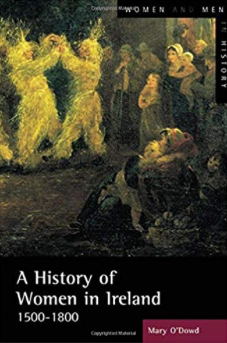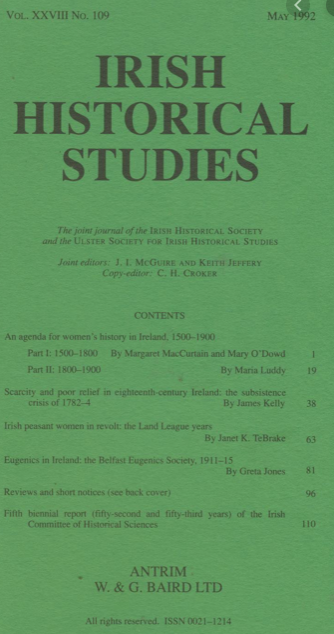Celebrating Gender History at Queen’s University: An exhibition honouring the career of Professor Mary O’Dowd
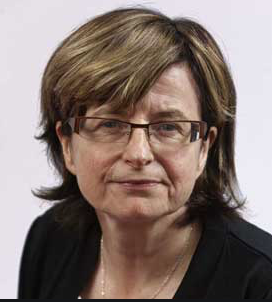
“Natalie Zemon Davs described women’s history as being essentially about asking the question ‘and what about the women?’ of all historical research, even where ‘at first glance it may seem hard to find evidence’” So began Mary O’Dowd’s 2005 survey of the history of women in early modern Ireland – a book that reviewed abundant historical sources alongside a significant and growing range of published research while at the same time establishing a 21st century research agenda for the history of women in Ireland.
Existing research outlined by O’Dowd in 2005 was in stark contrast to that noted thirteen years earlier when she and her co-authors posed a challenge to mainstream Irish history, the dominant discourses of which up to that point had effectively excluded the experience of Irish women. This article outlined a new agenda for women’s history in 1990s Ireland and noted that although by then recognised as a legitimate field of study, women’s history in Ireland was “still at a ‘pioneering’ stage’. As the dominant discourses in Irish history excluded women, the way forward was to encourage extensive research into the history of Irish women.
‘An Agenda for Women’s History in Ireland, 1500-1900’ and A history of women in Ireland 1500-1800 are only two examples of the importance of O’Dowd’s work to students and researchers of Irish women’s history. As the list of O’Dowd’s published titles testify, her work has always challenged contemporary historiography while looking outside of Irish history to locate and develop conceptual frameworks to help us re-think what is important and to question: what is real history? O’Dowd advocates the importance of sources and encourages us to consider using different types of sources through which we can add to our understanding of the lives of women, with the ultimate agenda of better understanding the complex realities of Irish society.
Underpinning this body of work and at the heart of O’Dowd’s presence at Queen’s University is how she instilled confidence and a sense of curiosity about historical sources in her students. This is evident from the publication of Women in Early Modern Ireland in 1991, which brought together the few extant secondary sources for women in this period, to her growing list of doctoral research students working and publishing in this area. In but one further example of the impact O’Dowd had on students at Queen’s, Women in Early Modern Ireland provided the core text of a new undergraduate module where no other texts existed and introduced a new generation of undergraduates to the challenges and rewards of using primary sources to write women into history. Previously overlooked sources are newly valued as a window into the complexity of women’s lives, and therefore Irish society. Existing well-known archives of established historical figures are re-mined and used in new ways as we ask: what about the women?
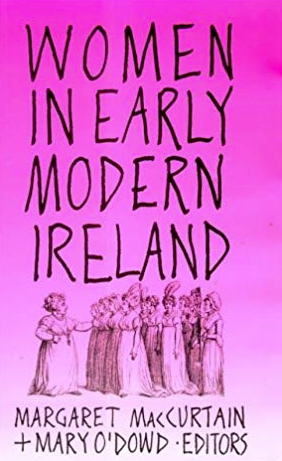
The exhibition to honour the career of Professor Mary O’Dowd includes a selection of sources from key manuscript collections, many of which she used in her teaching, alongside a display of her published work. A wide range of subject areas is evident: land and politics, women and politics, marriage, the family and children.
The papers are on display in the McClay Library Ground Floor exhibition space. All are located in Special Collections at Queen’s
1. Somerville and Ross Manuscripts MS 17
This important collection contains the personal and literary papers of Edith Somerville (1858-1949) and Violet Martin (1862-1915) alias “Somerville and Ross,” one of Ireland’s most celebrated literary partnerships. An important and unique collection reflecting the lives, interests and work of the two authors, the Somerville & Ross Manuscripts consist largely of diaries, correspondence, working papers, and draft manuscripts relating to the authors’ literary activities, personal interests and affairs.
The documents displayed reflect the value of the collection, not only for its literary papers, but for insight into the experience of women in the early 20th century, Irish rural economy and society.
MS 17/898/1
Drawer 5:
30/01/1921 “British Friesian Cattle, an account of an Experiment”, 7 pp., together with 4 typed letters relating to this article and mentioning the pleasure of “A.E.” at receiving it with a view to publication.
Document begins: “In the spring of the year 1910, two ladies with little or no practical experience of farming, found themselves in the unanticipated position of joint managers of a farm…”
MS 17/898/4
Drawer 6:
Membership card for the Munster Women’s Franchise League
MS 17/898/4 n.d. One of f Five suffragette addresses (two to the Munster Women’s Franchise League), c. 16 pp., together with some related autograph papers and 3 autograph letters signed from and to Edith Somerville, and a membership card for the Munster Women’s Franchise League.
MS17/911/1a
Drawer 7:
‘Two cases of the plague in London’, Edith Somerville
An unpublished original illustration for In the State of Denmark
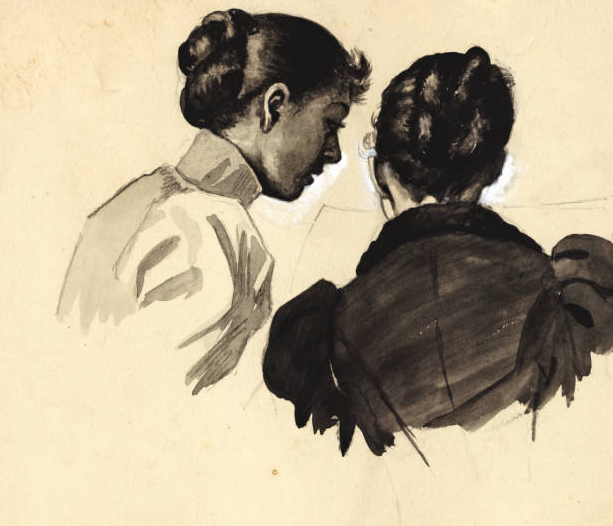
MS 17.911.6 No. 4. ‘The unswerving eyes of the last two market women.‘
Original manuscript illustrations by Edith Somerville (1858-1949).
All the illustrations and designs that accompany Somerville and Ross’s books were drawn or painted by Edith Somerville.
Somerville enjoyed a good degree of artistic success during her lifetime. She began her professional art training in Düsseldorf in 1881 before progressing to Colarossi’s art studio for young ladies in Paris in 1884.Throughout her life, particularly during the 1880s and 1890s, she returned again and again to Paris to study and improve her art. She became an illustrator and painter of note.
38 original illustrations by Edith Somerville for ‘In the State of Denmark’. Drawings mostly in pen-and wash, some heightened with grey, a few in pen-and-ink, 30 signed, various sizes (several approximately 10ins. by 15ins.), captions written in Edith Somerville’s hand on the back or on the mount of most drawings. ‘In the State of Denmark’, an account of the Somerville and Ross’s Danish tour was published in Stray-aways, 1920, as by Somerville and Ross.
These illustrations are published by permission of Curtis Brown Group Ltd. on behalf of the Literary Estates of Edith Somerville and Violet Martin. Original manuscript illustrations by Edith Somerville (1858-1949).
2. Sir Robert Hart Collection MS 15
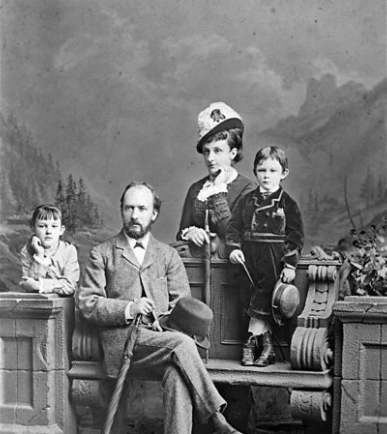
This collection includes several substantial series of letters to and from women. Hart organised his letters by subject. This organisation reflects the separate gender spheres of the early twentieth century, as personal and work-related correspondence were separated into different bundles, so too was correspondence from women and men. The collection is particularly rich in documenting the experience of European women in China. These letters also reveal the deep social bonds created in the small expatriate communities in China, as many of Hart’s correspondents in the US and Europe are former residents of China.
MS 15/2
Hart’s correspondence with his wife and family is also worth exploring for gender relations in a colonial family.
MS 15/2/10
A bundle of unprocessed letters written to Sir Robert Hart from daughters, sisters, cousins, other relatives
MS 15/2/7
Letters from Hessie Hart to her husband Sir Robert Hart in China
MS15/2/8
Drawer 4:
Illustrated letters from Eva Price to her uncle Sir Robert Hart in China
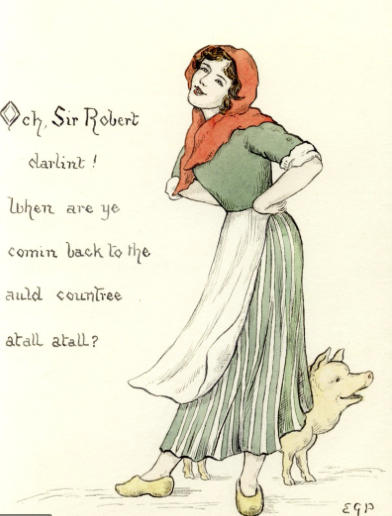
3. Waddell Collection MS 18
MS18 ‘Discipline, a collaboration’ – typescript draft of a novel by Helen Waddell
Drawer 2:
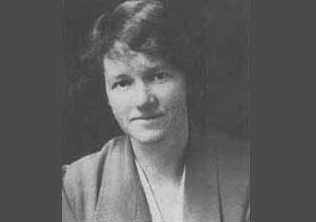
Waddell’s work Discipline (published for the first time in 2018) which she co-wrote with Maude Clarke, who had also completed her undergraduate degree at Queen’s, is seen as being indicative of Waddell’s affinity with the Suffragette movement. The main character in the text, Elizabeth, is married to an anti-feminist academic and becomes resentful of her him, eventually joining the suffraagette movement. Elizabeth has been argued to be a mirror of Waddell, with Elizabeth’s anti-feminist husband being paralleled with G. Gregory Smith, the Professor of English at Queen’s, with whom Waddell had a number of run-ins specifically to do with her attempts to make academic progress as a woman. Elizabeth’s friend, Anne, was supposedly based on Maude Clarke. Waddell sent the manuscript to a number of publishers; however, they all rejected it. Waddell’s friend and literary critic George Saintsbury claimed that the rejection was owing to the fact that the editors ‘didn’t want to wake the sleeping dogs of Suffraget[t]ism.’
Also on display:
Discipline : a novel by/ Helen Waddell and Maude Clarke [and] Lady Mary Wortley Montagu
Have women made a difference? : women in Irish universities, 1850-2010
E / edited by Judith Harford and Claire Rush, with a – foreword by Mary O’Dowd
4. Coghill Collection MS 63
Documents on the history of children and mothers in the collection
“BABY’S RECORD” : 4 printed volumes with details supplied in MS, comprising records of the childhood of the four children of Sir Egerton Bushe Coghill and Hildegarde Lady Coghill, together with letters about their development, their own first letters to mother, infantile drawings, news cuttings etc.
[Paddy (b. 1896); , Nevill (b. 1899);, Ambrose (b. 1902) and Katherine (b. 1906).
5. Ferguson Collection MS 12
Drawer 3
A collection of research materials collected by Godfrey W.Ferguson (d. c 1939/40) of Belfast, President of the Belfast Literary Society (1922-23, 1934-35), concerning Anne Isabella Milbanke, Lady Byron (1792-1860), wife of the Romantic Poet, Lord George Gordon Byron (1788-1824), and, in particular, the controversy surrounding the breakdown of their marriage in 1816 and her descendants’ attempts to defend her memory in later years.
The collection also includes copies of papers delivered by Ferguson to the Belfast Literary Society on the essayist and poet, Leigh Hunt (1784-1859) in 1910 and the Byron controversy in November 1934.
MS 12/1 23 November 1920 Hugh Montgomery to Judith, Lady Wentworth
Fivemiletown. Praising Lady Lovelace’s memoirs on Ralph Lovelace and mentioning his close relationship with Anne Blunt [Judith’s mother]. He offers to help her through his writing in any small way.
MS 12/7 05 November 1934 Lady Byron
Presidential address to the Belfast Literary Society by G.W. Ferguson.
Hard copy notebook, 28 pp.


